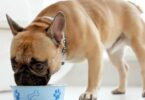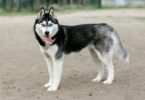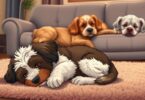What happens when a pug’s playful charm collides with a chihuahua’s bold personality? The result is the chihuahua pug mix—a compact, spirited companion stealing hearts nationwide. Often called a “Chug,” this hybrid blends the best (and sometimes most surprising) traits of its parent breeds.
Small but full of character, these dogs pack big energy into tiny frames. Their expressive eyes and quirky antics make them irresistible. But behind that adorable face lies a unique mix of loyalty, intelligence, and occasional stubbornness.
This guide dives into everything potential owners need to know. From their history as designer dogs to their distinct care requirements, we’ll explore how to keep your Chug healthy and happy. You’ll learn about their exercise needs, common health considerations, and training strategies that work with their spirited nature.
Whether you’re drawn to their compact size or curious about their personality quirks, understanding this hybrid ensures a rewarding partnership. Let’s uncover what makes these dogs truly special—and how to thrive together.
Breed Overview and History
The Chug’s story begins with two iconic breeds merging their distinct legacies. This designer dog emerged in the late 20th century, blending the pug’s ancient Chinese roots with the chihuahua’s Mexican heritage. Unlike established purebreds, these hybrids lack an official breed standard, leading to unpredictable combinations of traits.
Origin and Development of the Chug
Breeders first intentionally crossed pugs and chihuahuas to create compact companions with lively personalities. The goal? Combine the pug’s affectionate nature with the chihuahua’s alertness. Early chug dogs often surprised owners—some inherited the pug’s curled tail, while others sported the chihuahua’s apple-shaped head.
Evolution from Parent Lineages
Both parent breeds contribute unique physical markers. Pugs bring their signature wrinkled faces and sturdy builds, while chihuahuas influence ear shape and coat texture. Color patterns vary widely, ranging from fawn to black-and-tan combinations.
Historical roles also shape modern behaviors. Pugs were royal lapdogs, fostering loyalty. Chihuahuas served as watchdogs, explaining their territorial streak. These instincts merge in chugs, creating adaptable pets suited for diverse households.
Unique Traits of the Pug Chihuahua Mix
Chugs burst onto the canine scene with a personality cocktail that defies expectations. These compact companions might weigh under 20 pounds, but their bold attitudes fill entire rooms. One moment they're snuggling like lapdogs, the next they're patrolling windows with terrier-like intensity.
Energy levels swing like a pendulum between their parent breeds. Morning zoomies often give way to afternoon naps, requiring flexible routines. Owners quickly learn to read their dog's signals—a wagging tail might mean “playtime” or “back off,” depending on the day.
Training these hybrids demands creativity. Their intelligence shines during puzzle games, yet stubborn streaks emerge during repetitive commands. Early socialization helps balance their protective instincts with friendliness toward strangers.
No two chugs behave identically. Some inherit the pug's food motivation, while others channel the chihuahua's independence. This unpredictability keeps life interesting but requires patience during obedience training.
Daily walks and interactive toys prevent boredom-induced mischief. Their adaptability makes them suited for apartments, provided mental stimulation matches physical exercise. Understanding these quirks transforms challenges into bonding opportunities.
Physical Appearance and Size Considerations
When blending two distinct canine blueprints, the Chug showcases a fascinating mosaic of physical traits. Their appearance often surprises first-time owners—no two look exactly alike. These hybrids typically stand 10-14 inches tall, with weight ranging from 10-20 pounds depending on dominant genes.
Inherited Features from Both Parents
Facial characteristics reveal their dual heritage. Some sport the pug’s signature wrinkles and short muzzle, while others inherit the chihuahua’s prominent eyes and erect ears. Coat textures vary from silky-smooth to slightly coarse, usually measuring 1-2 inches in length.
Color patterns frequently combine fawn, black, or cream shades. The tail might curl tightly like a pug’s or stand straight like a chihuahua’s. These variations make each dog unique—a living testament to mixed-breed diversity.
Size, Weight, and Proportions
Most Chugs fall into the toy category, fitting comfortably in small living spaces. Their compact bodies balance sturdiness with agility. Proportion matters—look for symmetrical features without extreme brachycephaly (flat face) that could impact breathing.
When evaluating a potential pet, check for:
- Clear nasal passages
- Even weight distribution
- Healthy skin folds (if present)
Responsible breeders prioritize balanced structure over exaggerated traits. Always request health clearances for both parent breeds to anticipate size-related concerns.
Temperament and Personality Characteristics
The fusion of two distinct canine personalities creates a whirlwind of charm and challenge. These hybrids often balance a chihuahua’s fiery confidence with a pug’s affectionate steadiness. Their personality shines brightest when they feel secure in their environment—think loyal shadow meets neighborhood watchdog.
Mixing Pug and Chihuahua Temperaments
Expect boldness wrapped in velvet. While pugs typically offer relaxed companionship, their hybrid offspring might channel the chihuahua’s spirited independence. This blend creates dogs that alternate between lap-loving cuddles and spirited play sessions. Stubborn streaks emerge during training, requiring creative motivation like food puzzles or short, engaging games.
Ideal Family and Social Environments
Families thrive with these compact companions when children understand gentle handling. Their small size makes them fragile—toddlers should interact under supervision. Early socialization helps them adapt to various settings, from bustling parks to quiet home offices.
Successful integration involves:
- Introducing new people gradually
- Positive reinforcement during vet visits
- Controlled playdates with calm dogs
Consistent training establishes boundaries while preserving their quirky charm. Evening walks paired with puzzle toys channel their energy constructively. With patience, these dogs become adaptable partners for city dwellers and suburban families alike.
Health Considerations and Common Issues
Maintaining your dog's health requires understanding their unique vulnerabilities. Hybrid vigor offers some protection, but Chugs inherit risks from both parent breeds. Regular monitoring and early intervention become key to managing potential concerns.
Inherited Health Conditions to Watch For
Brachycephalic airway syndrome tops the list due to short muzzles. Watch for snoring, exercise intolerance, or heat sensitivity. Eye issues like corneal ulcers and dry eye affect 40% of these dogs, according to veterinary studies.
Orthopedic problems emerge from both lineages. Patellar luxation causes intermittent limping, while intervertebral disc disease risks spinal injuries. Dental crowding appears in 60% of cases, requiring specialized cleaning routines.
Preventative Healthcare and Veterinary Tips
Schedule bi-annual vet exams to catch issues early. Maintain a lean weight through measured meals—obesity worsens joint and breathing problems. Use harnesses instead of collars to protect delicate airways during walks.
Immediate care becomes crucial if you notice:
- Blue-tinged gums during activity
- Persistent eye redness or squinting
- Sudden reluctance to jump or climb stairs
With proper care, most Chugs live 12-15 years. Track symptoms in a health journal to spot patterns. Partner with a vet experienced in small-breed health management for best results.
Nutrition and Feeding Guidelines
Fueling these compact companions requires precision—their small size and unique needs demand careful planning. A balanced diet supports energy levels while preventing weight gain, a common concern for toy breeds.
Feeding Schedules for Puppies and Adults
Puppies thrive on 3-4 small meals daily to stabilize blood sugar. Transition to two meals by six months, aligning with their growth milestones. Adults do best with measured portions morning and evening, avoiding free-feeding.
High-quality kibble formulated for small dogs works well. Look for:
- Animal protein as the first ingredient
- Omega fatty acids for skin health
- Limited filler grains
Treats should never exceed 10% of daily calories. Use training rewards sparingly—try carrot slices or blueberries instead of processed snacks. Always provide fresh water in shallow bowls to accommodate short muzzles.
Consult your vet to calculate exact portions based on age and activity level. Regular weigh-ins help adjust food amounts as needed, ensuring your pet maintains an ideal body condition.
Exercise Needs and Daily Activity
Balancing activity and rest proves crucial for these spirited companions. Most thrive with 30-45 minutes of daily exercise split into multiple sessions. Morning walks paired with evening playtime prevent restlessness while respecting their physical limits.
Short leash walks work best for their compact size—aim for 10-15 minute outings. Indoor games like fetch down hallways or treat puzzles channel energy effectively. Many owners rotate toys weekly to maintain engagement without overwhelming their pets.
Breathing challenges from flat-faced ancestry demand careful monitoring. Avoid intense midday heat and opt for grassy surfaces over pavement. During winter, sweater layers protect against chills while maintaining mobility.
Busy schedules? Try these strategies:
- Hide kibble in snuffle mats during work hours
- Schedule 5-minute training breaks between tasks
- Use automatic ball launchers for solo play
Like similar small breeds, these dogs adapt well to apartment living when mentally stimulated. Watch for excessive panting or lagging behind—signs to shorten activities. Consistent routines help manage their energy peaks while promoting long-term health.
Training and Socialization Best Practices
Unlocking the best behavior in these compact companions starts with understanding their learning style. Their intelligence and occasional stubbornness demand tailored approaches that balance structure with fun. Successful training builds trust while channeling their natural curiosity into positive habits.
Positive Reinforcement and Rewards Techniques
Short, engaging sessions work best—aim for 5-10 minutes twice daily. Use high-value treats like diced chicken or cheese to motivate focus. Clicker training pairs well with verbal praise, creating clear communication during commands like “sit” or “leave it.”
Early socialization shapes lifelong confidence. Between weeks 8-16, expose puppies to:
- Various surfaces (grass, tile, carpet)
- Friendly strangers wearing hats or uniforms
- Car rides and vet office visits
Owners report better adaptability when dogs experience controlled interactions. A puppy meeting calm children at the park learns gentle play, while exposure to doorbells reduces territorial barking. Consistency matters—practice commands in different rooms to reinforce learning.
Daily routines prevent confusion. Set fixed meal times, walk schedules, and quiet hours. Involve all family members in using the same verbal cues. Celebrate small wins—a successful “stay” during distractions deserves extra playtime!
Grooming and Coat Maintenance Tips
A well-groomed coat does more than boost your dog’s appearance—it’s vital for their health. Regular grooming sessions become bonding opportunities while preventing common skin issues. Start with quick daily checks and build routines that fit your lifestyle.
Managing Shedding and Skin Care Routines
Brush short-haired dogs three times weekly using a soft-bristle tool. For thicker coats, upgrade to a deshedding comb during seasonal changes. Focus on friction areas like armpits and behind ears where mats form.
Facial wrinkles need special attention. Gently clean folds daily with hypoallergenic wipes, then pat dry. Weekly baths with oatmeal shampoo maintain coat shine without stripping natural oils. Always make sure to rinse thoroughly—leftover product irritates sensitive skin.
Trim nails every 3-4 weeks to prevent overgrowth. Use pet-safe ear cleaner monthly, avoiding cotton swabs deep in the canal. Dental chews complement brushing for fresher breath and healthier gums.
Experts recommend rotating between moisturizing sprays and leave-in conditioners. Watch for redness or excessive scratching, which signal allergies. Consistent care keeps coats lustrous and reduces vet visits from preventable issues.
Dental and Eye Care for Chug Dogs
Protecting your companion's smile and vision requires daily attention. These compact dogs face higher risks for dental disease due to crowded teeth—a common trait in small breeds. Brush their teeth 3-4 times weekly using finger brushes and vet-approved toothpaste to combat plaque buildup.
Eye care proves equally vital. Their prominent eyes make them prone to dryness and scratches. Gently wipe the corners daily with a damp cotton pad, moving outward to remove debris. Watch for cloudy appearance or excessive tearing—these signal urgent vet visits.
Professional cleanings every 6-12 months prevent periodontal disease linked to heart and kidney issues. At home, offer dental chews approved by the Veterinary Oral Health Council. For eye health, ask your vet about lubricating drops if you notice frequent blinking or redness.
Key warning signs demand immediate action:
- Persistent bad breath despite brushing
- Squinting or pawing at eyes
- Visible tartar on back teeth
Regular checks during cuddle sessions help spot problems early. Pair oral care with annual veterinary eye exams to maintain your pet’s wellbeing. Remember—healthy eyes and teeth directly impact their energy levels and longevity.
Special Considerations for Chug Ownership
Welcoming these spirited dogs into your home requires thoughtful preparation. Their compact size masks big needs—prospective owners must balance affection with structured care. Start by evaluating your daily routine: Can you provide four+ interactive play sessions? Is your budget ready for potential vet visits?
• Baby-proof cabinets and secure loose wires
• Designate a quiet retreat space
• Install window guards for climbers
• Budget $800-$1200 annually for care
These pets thrive in homes with older children who respect their boundaries. Always supervise interactions with other animals—their bold nature can spark conflicts with larger dogs. Use baby gates to manage introductions gradually.
Experts recommend non-slip rugs and raised food bowls to prevent injuries. Avoid leaving small objects within reach, as curious dogs might swallow them. Crate training helps manage separation anxiety during work hours.
Ethical sourcing remains crucial. Visit breeders who health-test parent pugs and chihuahuas, or partner with rescues that disclose medical histories. Ask detailed questions about socialization practices to ensure your new companion starts life on steady paws.
Choosing Between Male and Female Pug Chihuahua Mixes
When selecting a Chug dog, gender plays a bigger role than many expect. These pug mixes inherit traits from both parent breeds, creating distinct personalities shaped by biological factors. Understanding these differences helps match owners with compatible companions.
Male Chug dogs often display slightly larger frames and more outgoing attitudes. They tend to bond intensely with one family member while remaining playful with others. Females generally mature faster, showing calmer demeanors but stronger territorial instincts around unfamiliar dogs.
Training approaches vary between genders. Males respond well to active reward-based sessions. Females may require consistent routine reinforcement. Energy levels differ too—males frequently retain puppy-like enthusiasm longer.
Households with children often find female pug mixes adapt better to chaotic environments. Their nurturing side emerges with gentle kids. Males thrive in homes with structured schedules and space for supervised exploration.
Experts recommend considering these factors:
- Family activity levels
- Experience with strong-willed dogs
- Time available for training
Prospective owners should meet both genders before deciding. Observe interactions with household members and note each dog's response to basic commands. Individual personality often outweighs gender stereotypes in these spirited companions.
Parent Breed Influence: Pug vs. Chihuahua
Every Chug carries a genetic blueprint shaped by two iconic toy breeds. Their appearance and behavior reveal which parent dominates—some showcase the pug’s rounded eyes and stocky frame, while others inherit the chihuahua’s tapered muzzle and perky ears. Observing these traits helps owners tailor care strategies effectively.
Facial features often split between the breeds. Pugs contribute signature wrinkles and a pushed-in nose, whereas chihuahuas pass down larger, upright ears. Body types range from the pug’s muscular build to the chihuahua’s delicate bone structure. Coat colors typically blend fawn, black, or cream shades seen in both parent breeds.
Temperament swings between playful affection and bold vigilance. Dogs leaning toward pug ancestry tend to be food-motivated and sociable. Those with stronger chihuahua genes may display territorial behaviors and higher energy. Training approaches shift based on these inherited tendencies—patience works best for stubborn streaks.
Health risks mirror this duality. Breathing issues from flat faces clash with dental crowding common in smaller breeds. Regular vet checks catch early signs of joint problems or eye conditions tied to either lineage. Smart owners track symptoms like snoring or teeth misalignment.
Real-life examples show surprising variety. One Chug might nap contentedly like a pug, while another patrols windows like a chihuahua. Recognizing dominant traits guides everything from exercise plans to grooming routines. This balance makes each dog uniquely adaptable to different homes.
Understanding both parent breeds unlocks better care. Whether your companion favors cuddles or curiosity, their blended heritage demands flexible yet consistent routines. Watch for clues in their habits and physique—it’s the key to a thriving partnership.
Adapting the Pug Chihuahua Mix for Apartment Living
Compact size meets urban lifestyle—these spirited companions thrive in smaller spaces when their needs are met. Their moderate exercise requirements and adaptability make them ideal for city dwellers seeking a low-maintenance pet.
Create designated play zones with interactive toys to burn energy indoors. Short, frequent walks around the block satisfy their curiosity without overtaxing sensitive airways. Rotate chew toys weekly to prevent boredom-related mischief.
Barking management proves crucial in shared spaces. Use positive reinforcement when your dog stays calm during doorbell rings or hallway noises. White noise machines help mask triggering sounds from neighboring units.
Train for polite indoor behavior with consistent routines. Reward quiet moments and teach a “settle” command using high-value treats. Introduce your pet to neighbors during calm interactions to build positive associations.
Enhance safety by securing loose wires and using baby gates near stairs. Non-slip rugs prevent slips on hardwood floors. Elevate food bowls to ease digestion and maintain a clutter-free environment for zoomies.
With thoughtful preparation, these dogs become cherished apartment companions. Their loyalty shines brightest in cozy homes where they feel secure and engaged.
Closing Insights for Your Pug Chihuahua Mix Journey
Owning these spirited companions brings joy wrapped in responsibility. Their loyalty and energy demand consistent care through daily walks, mental stimulation, and regular grooming. Potential health problems like breathing issues require proactive monitoring and vet partnerships.
These dogs thrive when owners commit to their 12-15 year lifespan. Dedicate time to socialization and positive reinforcement training early. Annual checkups catch emerging problems before they escalate, while dental cleanings protect against common small-breed issues.
Successful integration involves three essentials:
• Rotate interactive toys to prevent boredom
• Maintain lean weight with portion control
• Create predictable routines for security
Every decision shapes your journey with these unique mixes. From choosing ethical breeders to mastering their care rhythm, informed choices build lasting bonds. Embrace the adventure—your dedication unlocks their full potential as cherished family members.
FAQ
How much exercise does a Chug need daily?
These hybrids thrive with 30–45 minutes of moderate activity split into short walks and play sessions. Their energy levels vary based on dominant parent traits, but mental stimulation through puzzle toys is equally important.
Are Chugs prone to breathing problems?
Yes, brachycephalic traits inherited from the Pug parent can cause respiratory issues. Avoid overheating, use harnesses instead of collars, and consult your vet if you notice excessive snoring or labored breathing.
What type of coat maintenance do they require?
Their short coats need weekly brushing to manage shedding. Pay attention to facial wrinkles (from Pug ancestry) by cleaning them with vet-approved wipes to prevent infections.










Leave a Comment